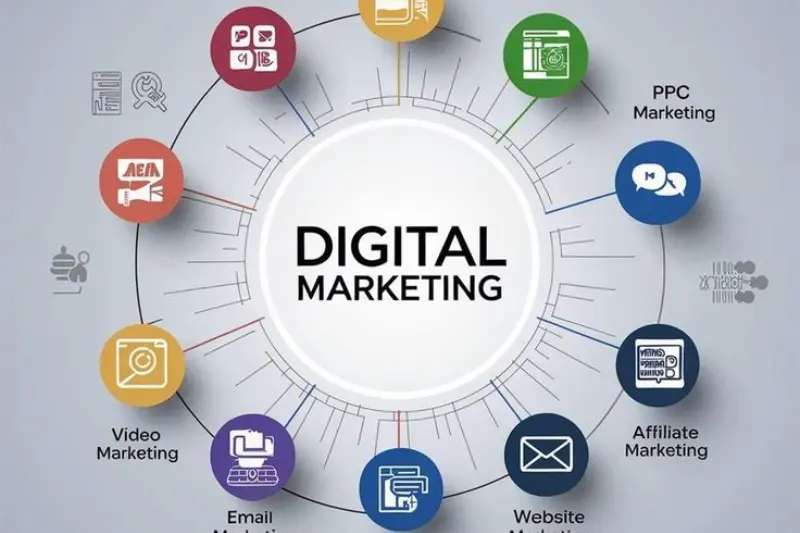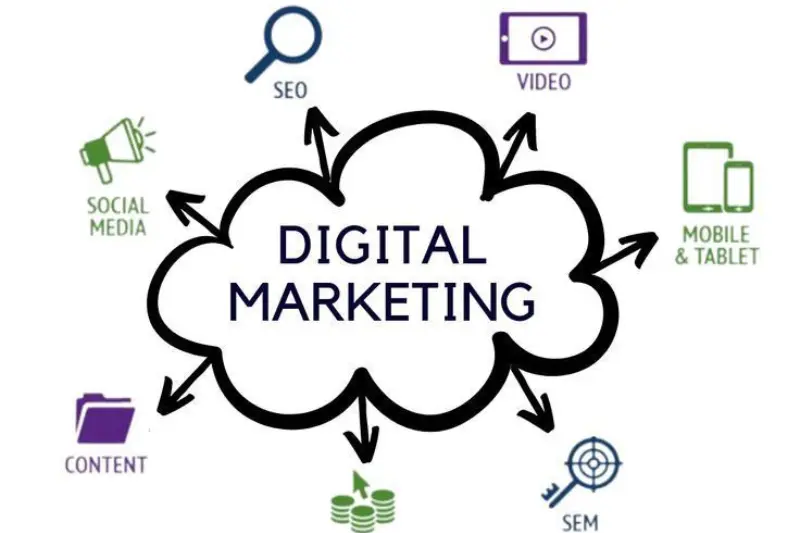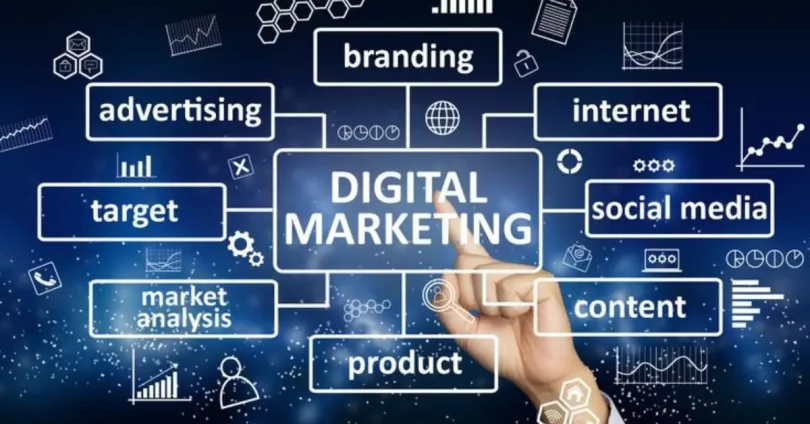In today’s fast-paced online world, Top digital marketing tools and how to use have become essential for businesses and marketers. These tools are software or platforms designed to help you plan, execute, and analyze your marketing campaigns more efficiently.
Using the righttop digital marketing tools and how to use can save you time, increase productivity, and improve results. Whether it’s tracking website traffic, managing social media, creating engaging visuals, or running email campaigns, the right tools make your marketing smarter and more effective.
Website Analytics Tools
Website analytics tools are essential for understanding how visitors interact with your site. They provide valuable insights that help you make data-driven decisions to improve performance.

Google Analytics
Google Analytics is one of the most popular tools for tracking website traffic, user behavior, and conversions.
How to Use Google Analytics Effectively:
- Install the tracking code: Add the Google Analytics tracking code to your website to start collecting data.
- Monitor key metrics: Track page views, bounce rate, average session duration, and more.
- Set up goals: Define goals such as form submissions, purchases, or newsletter sign-ups to measure conversions.
- Analyze reports: Use behavior, audience, and acquisition reports to understand where your visitors come from and how they engage with your site.
- Optimize your website: Identify underperforming pages and improve content, navigation, or calls-to-action based on insights.
Why It’s Useful:
Google Analytics helps you understand your audience, measure campaign effectiveness, and make informed decisions to grow your business online top digital marketing tools and how to use.
SEO Tools
SEO tools help improve your website’s visibility on search engines by analyzing keywords, backlinks, and competitors. They are essential for driving organic traffic and boosting search rankings.
SEMRush & Ahrefs
SEMRush and Ahrefs are two of the most powerful SEO tools available. They help you perform keyword research, track competitors, and analyze backlinks.
How to use SEMRush and Ahrefs effectively:
- Keyword research: Find high-ranking keywords in your niche to target in your content.
- Competitor analysis: See what keywords your competitors rank for and identify gaps in your strategy.
- Backlink tracking: Monitor your website’s backlinks and discover opportunities for link building.
- Site audit: Check for technical SEO issues and optimize your website for better performance.
Why it’s useful:
Using SEMRush and Ahrefs helps you improve search rankings, attract more organic traffic, and stay ahead of your competitors in the digital space.
Social Media Management Tools
Social media management tools help you organize, schedule, and analyze your social media campaigns efficiently and help in top digital marketing tools and how to use. They save time and ensure your content reaches the right audience consistently.

Hootsuite & Buffer
Hootsuite and Buffer are popular tools for managing multiple social media accounts from a single dashboard.
How to use Hootsuite and Buffer effectively:
- Connect your accounts: Link all your social media profiles like Facebook, Instagram, Twitter, and LinkedIn.
- Schedule posts: Plan and schedule content in advance to maintain a consistent posting schedule.
- Monitor engagement: Track likes, shares, comments, and mentions to understand audience interactions.
- Analyze performance: Use built-in analytics to measure engagement, reach, and overall performance.
Tips for maintaining a consistent social media presence:
- Create a content calendar to plan posts in advance.
- Mix different types of content like images, videos, and polls.
- Engage with your audience by responding to comments and messages promptly.
- Regularly review analytics to refine your strategy.
Why it’s useful:
Using Hootsuite and Buffer allows you to save time, stay organized, top digital marketing tools and how to use and consistently engage your audience across multiple platforms.
You may also like to read these posts:
Easy Website Builders for Beginners Explained
Best Free Online Tools for Students and Professionals
Best Creative Writing Prompts for Beginners to Try Today
Simple Interior Design Ideas for Homes to Create Style
Graphic Design Tools
Graphic design tools are essential for creating eye-catching visuals that enhance your marketing campaigns. They help your brand stand out and make content more engaging.
Canva
Canva is a user-friendly design tool that allows anyone, even beginners, to create professional-looking graphics for social media, blogs, ads, and more.
How to use Canva effectively:
- Choose a template: Start with ready-made templates for social media posts, banners, or ads.
- Customize designs: Add your own text, images, icons, and colors to match your brand.
- Use drag-and-drop features: Easily arrange elements without needing advanced design skills.
- Download your visuals: Save designs in formats like PNG, JPG, or PDF for use across different platforms.
Easy ways to design professional-looking graphics:
- Stick to your brand colors and fonts for consistency.
- Keep designs simple and uncluttered.
- Use high-quality images and icons.
- Take advantage of Canva’s built-in stock photos and templates.
Why it’s useful:
Canva helps marketers create visually appealing content quickly and efficiently, making your campaigns more attractive and engaging to your audience top digital marketing tools and how to use.
Email Marketing Tools
Email marketing tools help you connect directly with your audience, nurture leads, and drive sales. They make it easier to manage campaigns and track results.
Mailchimp
Mailchimp is a popular email marketing platform that allows you to create, send, and automate email campaigns with ease.
How to use Mailchimp effectively:
- Build email lists: Collect subscriber emails through sign-up forms on your website or social media.
- Segment your audience: Group contacts based on interests, behavior, or demographics for targeted campaigns.
- Automate campaigns: Set up automated emails for welcome messages, promotions, or abandoned carts.
- Track performance: Monitor open rates, click-through rates, and conversions to improve future campaigns.
Best practices for email marketing success:
- Personalize emails to make them more engaging.
- Use clear subject lines to increase open rates.
- Keep email content concise and visually appealing.
- Test different email formats and timings to see what works best.
Why it’s useful:
Mailchimp helps you build strong relationships with your audience, increase engagement, and drive more conversions through targeted email marketing.
Paid Advertising Tools
Paid advertising tools allow you to reach a larger audience quickly and drive targeted traffic to your website. They are essential for boosting sales, leads, and brand awareness.
Google Ads
Top digital marketing tools and how to use Google Ads is a popular platform for running search, display, and video advertising campaigns.
How to use Google Ads effectively:
- Choose campaign type: Decide between search ads, display ads, or video ads based on your goals.
- Target the right audience: Use keywords, demographics, location, and interests to reach potential customers.
- Set budget and bidding: Define your daily or monthly budget and choose a bidding strategy.
- Create compelling ads: Write clear, engaging ad copy with strong calls-to-action.
- Track performance: Monitor metrics like clicks, impressions, click-through rates (CTR), and conversions to measure ROI.
Why it’s useful:
Top digital marketing tools and how to use Google Ads helps you get immediate visibility on search engines, attract targeted traffic, and measure the effectiveness of your campaigns for better results.
Project Management Tools in Top digital marketing tools and how to use
Project management tools help marketers stay organized, plan campaigns, and collaborate efficiently with their teams. They ensure that tasks are completed on time and projects run smoothly.
Trello
Trello is a popular project management tool that uses boards, lists, and cards to organize tasks visually.
How to use Trello effectively:
- Create boards: Set up separate boards for different projects or campaigns.
- Use lists: Organize tasks into lists such as “To Do,” “In Progress,” and “Completed.”
- Add cards: Break down tasks into cards with descriptions, deadlines, and attachments.
- Assign tasks: Assign cards to team members and track progress.
- Collaborate: Use comments, checklists, and labels to communicate and stay organized.
Why it’s useful:
Trello helps marketing teams coordinate efforts, manage deadlines, and keep all tasks organized in one place, making campaigns more efficient and productive.
All-in-One Marketing Platforms
All-in-one marketing platforms combine multiple tools in a single system, making it easier to manage marketing efforts efficiently. They integrate CRM, email marketing, social media, and content management.
HubSpot
HubSpot is a popular platform that offers a wide range of marketing tools in one place, helping businesses streamline their campaigns and track results effectively.
How to use HubSpot effectively:
- Manage contacts and leads: Use the CRM to organize and track all your customer interactions.
- Automate email campaigns: Send personalized emails and workflows based on user behavior.
- Content management: Create and publish blog posts, landing pages, and social media content from one platform.
- Track performance: Analyze website traffic, campaign engagement, and ROI using built-in analytics.
Benefits of using an integrated marketing platform:
- Saves time by centralizing all marketing tasks.
- Provides better insights with unified reporting.
- Enhances team collaboration and efficiency.
- Helps maintain consistent branding across channels.
Why it’s useful:
HubSpot allows businesses to manage all their marketing activities from a single platform, making campaigns more organized, efficient, and effective.
FAQs About Top Digital Marketing Tools
Do I need to pay for all these tools?
Not necessarily. Many tools like Google Analytics, Canva, and Mailchimp offer free versions with basic features. Premium versions provide advanced features for more serious marketing needs.
Which tools are best for beginners?
For beginners, Canva, Hootsuite, and Mailchimp are user-friendly and easy to start with. They require little to no technical knowledge.
Can small businesses benefit from these tools?
Yes, even small businesses can use these tools to save time, improve marketing results, and compete with larger brands online.
How do I measure the effectiveness of these tools?
Most tools have analytics and reporting features. Track metrics like traffic, engagement, conversions, and ROI to evaluate performance.
Can one tool replace another?
Some tools overlap in features, but using a combination is usually more effective. For example, Canva and HubSpot may both help with content, but HubSpot integrates it with email, CRM, and social media.
Conclusion
Digital marketing tools play a crucial role in helping businesses and marketers work smarter, save time, and achieve better results. From tracking website performance with Google Analytics to creating engaging visuals with Canva, each tool serves a unique purpose in enhancing your marketing efforts.
To get the best results, it’s important to experiment with different tools and combine them based on your specific needs. By using the right mix of tools, you can streamline your campaigns, reach your audience more effectively, and grow your business online.







